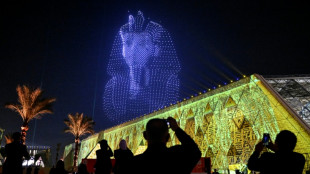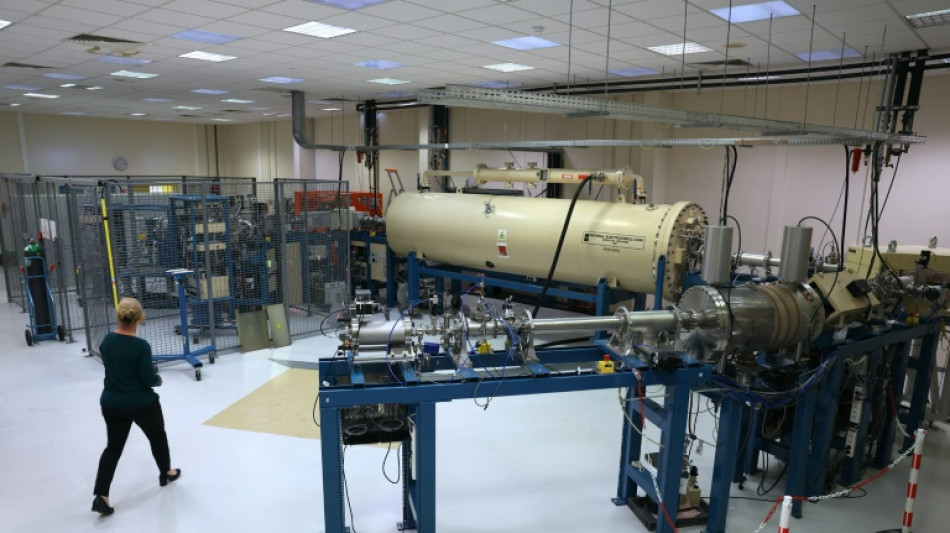
-
 Tonga rugby league star has surgery after 'seizure' against NZ
Tonga rugby league star has surgery after 'seizure' against NZ
-
Trent's return with Real Madrid reminds Liverpool of what they are missing

-
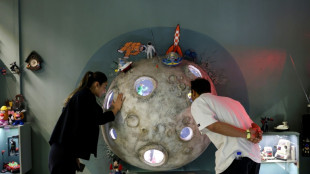 Tehran toy museum brings old childhood memories to life
Tehran toy museum brings old childhood memories to life
-
Iran banking on Iraq vote to retain regional influence

-
 Daughter of 'underground' pastor urges China for his release
Daughter of 'underground' pastor urges China for his release
-
Trump the Great? President steps up power moves

-
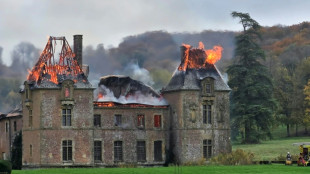 Fire ravages French monastery dubbed 'Notre-Dame of the Ardennes'
Fire ravages French monastery dubbed 'Notre-Dame of the Ardennes'
-
Bills outlast Chiefs while NFL-best Colts fall to Steelers

-
 NBA champion Thunder roll over Pelicans to remain unbeaten
NBA champion Thunder roll over Pelicans to remain unbeaten
-
Eliud Kipchoge unveils plan to run 7 marathons on 7 continents

-
 Milan deny Roma top spot in Serie A, Inter beat Verona
Milan deny Roma top spot in Serie A, Inter beat Verona
-
Lens back up to third in Ligue 1 as Lyon held at Brest

-
 NFL-best Colts fall to Steelers, Packers lose to Carolina
NFL-best Colts fall to Steelers, Packers lose to Carolina
-
'Regretting You' wins spooky slow N. American box office

-
 'Just the beginning' as India lift first Women's World Cup
'Just the beginning' as India lift first Women's World Cup
-
Will Still sacked by struggling Southampton

-
 Malinin wins Skate Canada crown with stunning free skate
Malinin wins Skate Canada crown with stunning free skate
-
Barca beat Elche to recover from Clasico loss

-
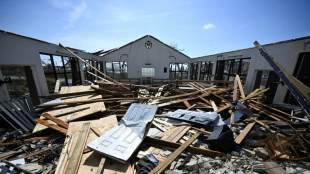 Jamaica deaths at 28 as Caribbean reels from colossal hurricane
Jamaica deaths at 28 as Caribbean reels from colossal hurricane
-
Verma and Sharma power India to first Women's World Cup triumph

-
 Auger-Aliassime out of Metz Open despite not yet securing ATP Finals spot
Auger-Aliassime out of Metz Open despite not yet securing ATP Finals spot
-
Haaland fires Man City up to second in Premier League

-
 Sinner says staying world number one 'not only in my hands'
Sinner says staying world number one 'not only in my hands'
-
Ready for it? Swifties swarm German museum to see Ophelia painting
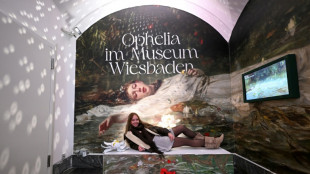
-
 Pope denounces violence in Sudan, renews call for ceasefire
Pope denounces violence in Sudan, renews call for ceasefire
-
Kipruto, Obiri seal Kenyan double at New York Marathon

-
 OPEC+ further hikes oil output
OPEC+ further hikes oil output
-
Sinner returns to world number one with Paris Masters win

-
 Sinner wins Paris Masters, reclaims world No. 1 ranking
Sinner wins Paris Masters, reclaims world No. 1 ranking
-
Nuno celebrates first win as West Ham boss

-
 Obiri powers to New York Marathon win
Obiri powers to New York Marathon win
-
Two Louvre heist suspects a couple with children: prosecutor
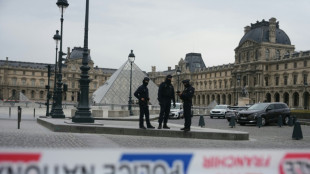
-
 Verma, Sharma help India post 298-7 in Women's World Cup final
Verma, Sharma help India post 298-7 in Women's World Cup final
-
Inter snapping at Napoli's heels, Roma poised to pounce

-
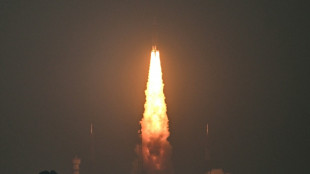 India space agency launches its heaviest satellite
India space agency launches its heaviest satellite
-
Wolves sack Pereira after winless Premier League start

-
 Debutants Berkane among CAF Champions League top seeds
Debutants Berkane among CAF Champions League top seeds
-
Sundar steers India to five-wicket win over Australia in 3rd T20

-
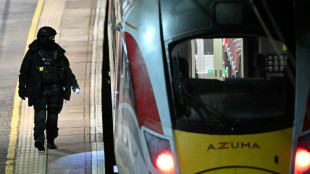 What we know about the UK train stabbings
What we know about the UK train stabbings
-
Jonathan Milan wins wet Tour de France Singapore Criterium

-
 Canadian teen Mboko wins Hong Kong Open for second WTA title
Canadian teen Mboko wins Hong Kong Open for second WTA title
-
Two children among dead in Russian blitz on Ukraine
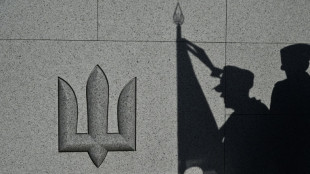
-
 South Africa opt to bowl against India in Women's World Cup final
South Africa opt to bowl against India in Women's World Cup final
-
Dominant McKibbin wins Hong Kong Open to seal Masters spot

-
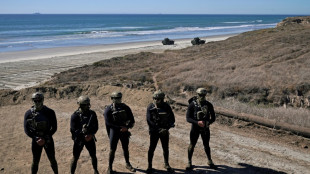 US Navy veterans battle PTSD with psychedelics
US Navy veterans battle PTSD with psychedelics
-
'Unheard of': Dodgers in awe of iron man Yamamoto

-
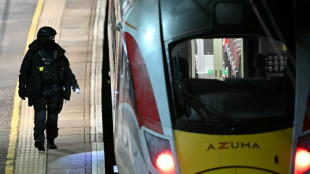 UK police probe mass train stabbing that wounded 10
UK police probe mass train stabbing that wounded 10
-
'It's hard' - Jays manager Schneider rues missed chances in World Series defeat

-
 Women's cricket set for new champion as India, South Africa clash
Women's cricket set for new champion as India, South Africa clash
-
Messi scores but Miami lose as Nashville level MLS Cup playoff series


Time machine: How carbon dating brings the past back to life
From unmasking art forgery to uncovering the secrets of the Notre-Dame cathedral, an imposing machine outside Paris can turn back the clock to reveal the truth.
It uses a technique called carbon dating, which has "revolutionised archaeology", winning its discoverer a Nobel Prize in 1960, French scientist Lucile Beck said.
She spoke to AFP in front of the huge particle accelerator, which takes up an entire room in the carbon dating lab of France's Atomic Energy Commission in Saclay, outside the capital.
Beck described the "surprise and disbelief" among prehistorians in the 1990s when the machine revealed that cave art in the Chauvet Cave in France's southeast was 36,000 years old.
The laboratory uses carbon dating, also called carbon-14, to figure out the timeline of more than 3,000 samples a year.
- So how does it work? -
First, each sample is examined for any trace of contamination.
"Typically, they are fibres from a jumper" of the archaeologist who first handled the object, Beck said.
The sample is then cleaned in an acid bath and heated to 800 degrees Celsius (1,472 Fahrenheit) to recover its carbon dioxide. This gas is then reduced to graphite and inserted into tiny capsules.
Next, these capsules are put into the particle accelerator, which separates their carbon isotopes.
Isotopes are variants of the same chemical element which have different numbers of neutrons.
Some isotopes are stable, such as carbon-12. Others -- such as carbon-14 -- are radioactive and decay over time.
Carbon-14 is constantly being created in Earth's upper atmosphere as cosmic rays and solar radiation bombard the chemical nitrogen.
In the atmosphere, this creates carbon dioxide, which is absorbed by plants during photosynthesis.
Then animals such as ourselves get in on the act by eating those plants.
So all living organisms contain carbon-14, and when they die, it starts decaying. Only half of it remains after 5,730 years.
After 50,000 years, nothing is left -- making this the limit on how far back carbon dating can probe.
By comparing the number of carbon-12 and carbon-14 particles separated by the particle accelerator, scientists can get an estimate of how old something is.
Cosmic radiation is not constant, nor is the intensity of the magnetic field around Earth protecting us from it, Beck said.
That means scientists have to make estimations based on calculations using samples whose ages are definitively known.
This all makes it possible to spot a forged painting, for example, by demonstrating that the linen used in the canvas was harvested well after when the purported painter died.
The technique can also establish the changes in our planet's climate over the millennia by analysing the skeletons of plankton found at the bottom of the ocean.
- Notre-Dame revealed -
Carbon dating can be used on bones, wood and more, but the French lab has developed new methods allowing them to date materials that do not directly derive from living organisms.
For example, they can date the carbon that was trapped in iron from when its ore was first heated by charcoal.
After Paris's famous Notre-Dame cathedral almost burned to the ground in 2019, this method revealed that its big iron staples dated back to when it was first built -- and not to a later restoration, as had been thought.
The technique can also analyse the pigment lead white, which has been painted on buildings and used in artworks across the world since the fourth century BC.
To make this pigment, "lead was corroded with vinegar and horse poo, which produces carbon dioxide through fermentation," Beck explained.
She said she always tells archaeologists: "don't clean traces of corrosion, they also tell about the past!"
Another trick made it possible to date the tombs of a medieval abbey in which only small lead bottles had been found.
As the bodies in the tombs decomposed, they released carbon dioxide, corroding the bottles and giving scientists the clue they needed.
"This corrosion was ultimately the only remaining evidence of the spirit of the monks," Beck mused.
J.AbuHassan--SF-PST

